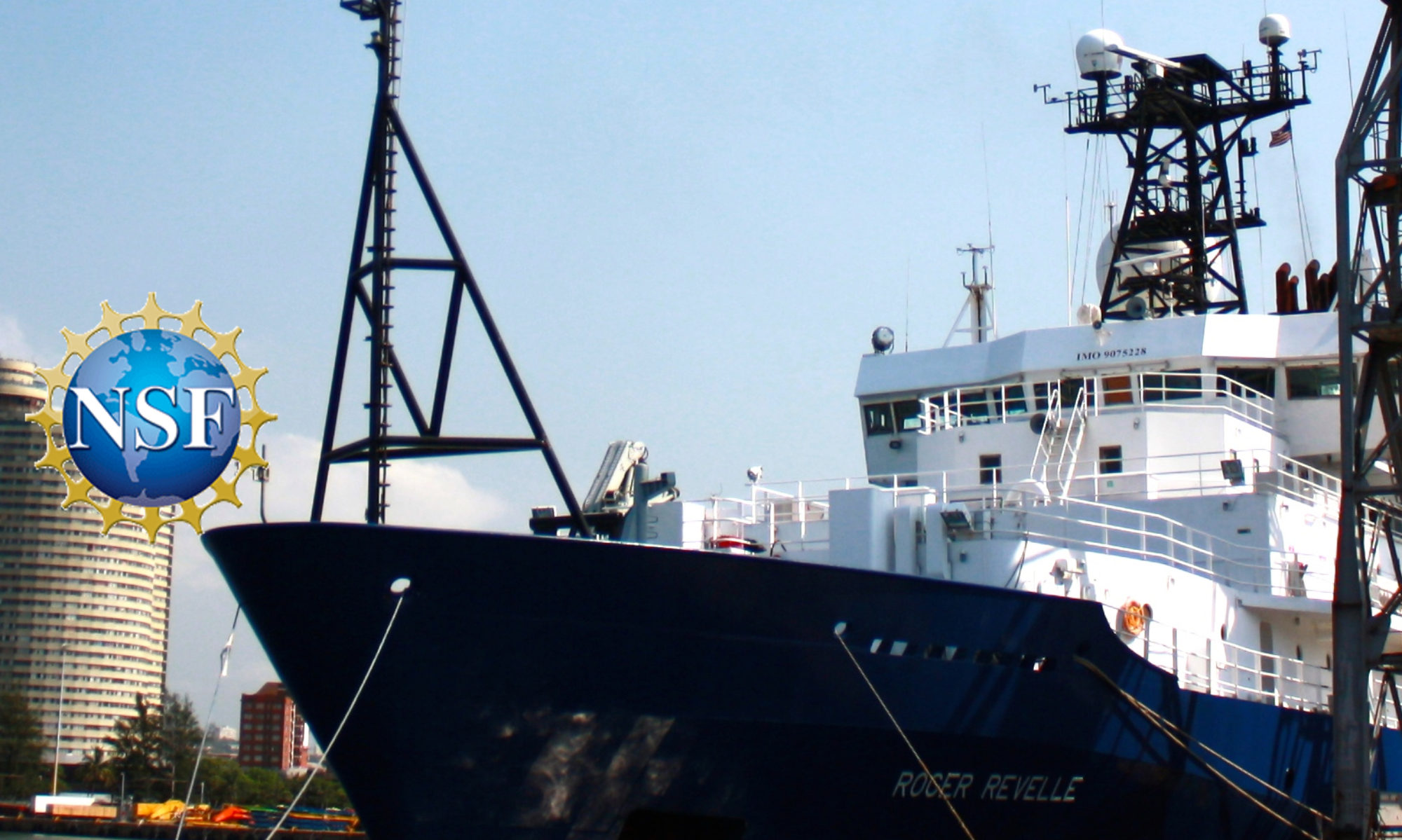By Ashley Long
There are still many unknowns when it comes to interpreting what the earth looked like in the past and what dictated what a certain location was like. In order to put together a story about the environments of ancient landscapes, scientists need to collect data that is often time intensive and provides only glimpses into the past. I am a geologist who is investigating what controls where old rivers were when sea level was much lower across the South Carolina Shelf and how these rivers filled with sediment as sea level rose. I have found that there are shallow folds and faults in the subsurface that likely controlled where old rivers flowed. These faults and folds could be the result of earthquakes in the Myrtle Beach region. But what caused the folds and faults, and do those conditions still exist today?

To answer this question, I still need a bit of training. I applied to attend the Early Career Chief Scientist Training research expedition to gain the experience with the Scripps Portable Multichannel Seismic (MCS). Using this data acquisition technique allows me to image deeper into the earth and with higher resolution than the limited deeper dataset currently available to me. By acquiring data like this in my field area, my colleagues and I will likely be able to determine how deep the faults and folded zone extends; and by doing so, we can determine the relative age of deformation. The experience gained from this expedition will enable me to know enough about the Portable MCS to plan my own research expedition using this same data acquisition technique.
Teamwork and compromise are key to a successful expedition like the one I am on today. Running an expedition involves hundreds of hours of planning and dozens of people coordinating in a joint effort, and that is before we even get on the ship! For example, this expedition was proposed in early 2016, to provide training for marine geoscientists who might be interested in using the tools for their research but may never have the opportunity to actually see those tools deployed. The location of the expedition was chosen to maximize its impact by collecting data in an area of world with an established a large scientific community interested in unraveling the tectonic and depositional history of the Cascadia margin.
As a participant in this expedition, I have helped plan where the ship will collect data by taking into consideration everyone’s research interests and objectives and making hard choices as to how to meet everyone’s scientific goals. When we encounter problems, especially if a tool is not functioning properly, we can lose time. We only have funding for the ship for a limited number of days, so our well-thought-out plan for where we’ll collect data sometimes has to be modified.
Without participating in an expedition like this, I do not feel that I would be adequately prepared to propose and plan my own. By no means will I come out of this experience feeling like an expert or even quite fully prepared to submit my first grant to aid in my current research. But I will feel much more comfortable reaching out to the experts I have met on this expedition for help, advice, and potentially as research collaborators in the future.
Many of the unknowns we, as a geologic community, face result from a lack of data from inaccessible areas. These remote areas, which can include the few miles off of our own coastlines, are still in an exploration phase. To collect these data, we need to make tough decisions. Do we sacrifice the time away from our family, friends, and teaching and research responsibilities and live in virtual isolation with people we hardly know to collect those data? Knowing in the end that these data will result in only more questions? For me, with the support of a husband, who is also a geologist and understands what I want to accomplish and is happy to watch the kids at home alone for the time I am away, the answer is yes.
— Ashley Long is a Ph.D. student at Coastal Carolina University
